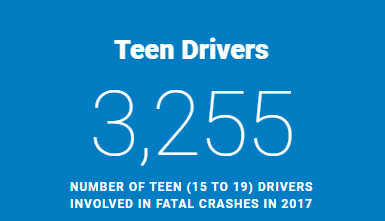
October 20-26 is National Teen Driver Safety Week, which means it’s a great time for California teenagers and parents to talk to one another about how teenagers can travel safely on the roads, streets and highways.
Parents are encouraged to talk to their teenagers about the importance of good safety habits when operating a vehicle. Self-reported surveys show teens whose parents set firm rules for driving typically engage in less risky driving behaviors and are involved in fewer crashes.
The California Department of Alcoholic Beverage Control (ABC), in partnership with the California Office of Traffic Safety (OTS) and the National Highway Traffic Safety Administration (NHTSA), is reminding all young motorists to focus on the road to help increase safety for everyone.
The greatest dangers for teen drivers are alcohol consumption, inconsistent or no seat belt use, distracted driving, speeding, and driving with passengers in the vehicle.
The California OTS offers tips to parents and caregivers on how to talk to teens about the consequences of making dangerous and illegal choices behind the wheel.
- The number of California teen motor vehicle fatalities (age 16-19) increased 2.7 percent from 219 in 2015 to 225 in 2016.
- The number of California teen driver fatalities (age 16-19) increased 12.3 percent from 98 in 2015 to 110 in 2016.
“All of us can play a role in helping to bring these tragic numbers down by encouraging teens to practice safe driving habits and really focus on the road,” says ABC Director Jacob Appelsmith. “ABC Agents are doing their part by conducting compliance checks at ABC licensed establishments throughout California in the effort to reduce youth access to alcohol.”
Motor vehicle crashes are the leading cause of death for teens 15 to 18 years old in the United States. In 2017, there were 2,247 people killed in crashes involving a teen driver (15 to 18 years old) and an estimated 93,000 teen drivers injured in motor vehicle traffic crashes. Parents can help protect their teen drivers by talking with them about these risks.
To help reduce the risks for teen drivers follow these basic rules:
- Impaired Driving: All teens are too young to legally buy, possess, or consume alcohol. However, nationally in 2017, 15 percent of teen drivers involved in fatal crashes had alcohol in their system.
- Seat Belt Safety: Wearing a seat belt is one of the simplest ways for teens to stay safe in a vehicle. Yet too many teens aren’t buckling up. In fact, there were 539 passengers killed in passenger vehicles driven by teen drivers, and more than half (60 percent) of those passengers who died were NOT buckled up at the time of the fatal crash.
- Distracted Driving: Cell phone use while driving is more than just illegal, but also risky — it can be deadly. Drivers under 18 are not allowed to use a phone for any reason, including hands-free.
- Speed Limits: Speeding is a critical issue for all drivers, especially for teens. In 2017, more than one-quarter (27 percent) of all teen drivers of passenger vehicles involved in fatal crashes were speeding at the time of the crash.
- The likelihood of teen drivers engaging in risky behavior triples when traveling with multiple passengers.
Whether it’s impaired driving, not wearing a seat belt, speeding, driving distracted or with friends in the car, it’s important for parents to let their teen know that driving is not a right, but a privilege. It can be taken away when they don’t follow the rules.
For more information about National Teen Driver Safety Week and to learn safe driving tips to share with your teens, visit www.nhtsa.gov/road-safety/teen-driving.


Here’s another scary thought. MDUSD doesn’t require students to have a drivers license to drive onto any of its high school campuses. Students can get a permit meaning they have permission to drive on campus.
That’s the case with all schools, public and private. People under 18 and at least 15 ½ are allowed to get a learner’s permit otherwise known as a provisional driver license. Part of the deal is that they have to have a parent/guardian or other adult over age 25 with them when they are driving.
A normal part of driving at that age is going to school, parking, and later, driving back home. I suspect that most of the time the kid drives to school and their parent takes the car back home. In the afternoon the parent takes the car to the school and their child then drives home or to whatever activities they will be doing.
Once they complete enough hours of driving and pass the DMV tests they get a Minors’ Driver License. They are allowed to drive alone but can’t drive between 11pm and 5am. They can’t have passengers under 20 years old unless there’s also a parent/guardian or an adult over age 25 with them. There’s an exception where they are allowed to drive immediate family members to/from school, medical appointments and similar activities but you need to get signatures from the schools, doctors, plus the parents allowing for that exception.
When I drop my grandson at highschool I commonly see a kid driving and then get out and go into the school. The adult then hops into the driver seat and away they go. These kids are going to become drivers and I think this is a great way for them to get practice. We will be doing the same thing when the boy hits the right age.
No, these are not students driving to school and the parent drives home. I’m talking unlicensed, under age drivers driving to school with friends in the car and parking for the day in the school parking lot. License not required to park in the lot.
Mika, please tell us what school and show pics please.
So if you are a new 16-17 year old driver it is illegal to use a GPS on your phone? You can drive but get lost anyway.